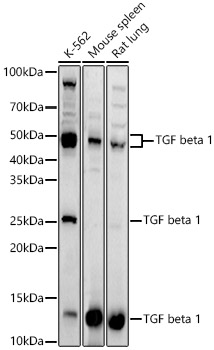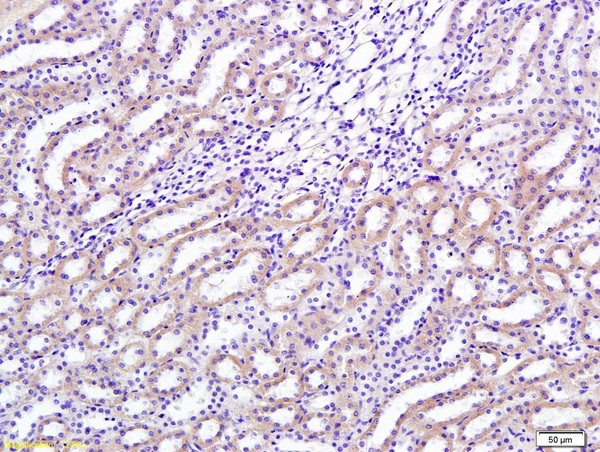![TGF-beta(1D11.16.8), CF405S conjugate, 0.1mg/mL [26628-22-8] TGF-beta(1D11.16.8), CF405S conjugate, 0.1mg/mL [26628-22-8]](https://biotium.com/wp-content/uploads/2016/12/BNUB0977-0-1.jpg)
TGF-beta(1D11.16.8), CF405S conjugate, 0.1mg/mL [26628-22-8]
BNC040977
ApplicationsFunctional Assay, ImmunoHistoChemistry, ImmunoHistoChemistry Paraffin
Product group Antibodies
ReactivityBovine, Canine, Hamster, Human, Monkey, Mouse, Rat
TargetTGFB1
Overview
- SupplierBiotium
- Product NameTGF-beta(1D11.16.8), CF405S conjugate, 0.1mg/mL [26628-22-8]
- Delivery Days Customer9
- ApplicationsFunctional Assay, ImmunoHistoChemistry, ImmunoHistoChemistry Paraffin
- CertificationResearch Use Only
- ClonalityMonoclonal
- Clone ID1D11.16.8
- Concentration0.1 mg/ml
- ConjugateOther Conjugate
- Gene ID7040
- Target nameTGFB1
- Target descriptiontransforming growth factor beta 1
- Target synonymsCED, DPD1, IBDIMDE, LAP, TGF-beta1, TGFB, TGFbeta, transforming growth factor beta-1 proprotein, TGF-beta-1, latency-associated peptide, prepro-transforming growth factor beta-1, transforming growth factor beta1
- HostMouse
- IsotypeIgG1
- Scientific DescriptionThis MAb recognizes TGF beta 1, 2 and 3. Three TGF-betas have been identified in mammals. TGF-beta1, TGF-beta2 and TGF-beta3 are each synthesized as precursor proteins that are very similar in that each is cleaved to yield a 112 amino acid polypeptide that remains associated with the latent portion of the molecules. Biologically active TGF-beta requires dimerization of the monomers (usually homodimers) and release of the latent peptide portion. Overall, the mature region of the TGF-beta3 protein has approximately 80% identity to the mature region of both TGF-beta1 and TGF-beta2. However, the NH2 terminals or precursor regions of their molecules share only 27% sequence identity. TGF-betas inhibit the growth of epithelial cells and stimulate the growth of mesenchymal cells.Primary antibodies are available purified, or with a selection of fluorescent CF® Dyes and other labels. CF® Dyes offer exceptional brightness and photostability. Note: Conjugates of blue fluorescent dyes like CF®405S and CF®405M are not recommended for detecting low abundance targets, because blue dyes have lower fluorescence and can give higher non-specific background than other dye colors.
- SourceAnimal
- ReactivityBovine, Canine, Hamster, Human, Monkey, Mouse, Rat
- Storage Instruction2°C to 8°C
- UNSPSC12352203






